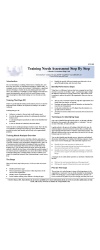Interactive Vs. Content Marketing On Social Networking
Content marketing is the old school method of using articles, photos, video as a vehicle to sell products and services, to create a brand, and/or generate ad revenue, using the content to drive interest.
Interactive marketing has a similar purpose, but it doesn’t rely on CONTENT to create a brand. It relies on interaction, primarily on social media. Another term one could use could be conversational marketing.
It’s “new school”, because it’s only been practical since the advent of the Internet, and more specifically, the huge numbers of people on social media platforms.
While both content and interactive marketing have the same purpose, the means for creating the brand are different.
Content marketing relies on the VALUE of the content to customers and potential customers.
Interactive marketing works when it creates a perception that the customer(s) on interacts with come to like and trust you, regardless of the content in the exchanged messages.
The Problems With Interactive Marketing
No question you want people to like and trust you, and that being available, responsive and outgoing on social media may be one method to create those results.
The problems come with issues of scalability, and whether the people you are interacting with are actually capable of becoming future customers. Consider:
- It’s not uncommon, on social media for only a very small number of people to see your comments and interactions. Not only is the number small, but even when the social media metrics suggest lots of views, they are often views from the same people, over and over – those with whom you are interacting.
- Interactions (comments) on social media are usually NOT searchable. That means that their life span (the period where people will read your comments) is short. Depending on platform, you may get readers up to two days after posting, but generally not longer.
- Comments are often without content value. Rarely do they add significant points to an issue, and it’s even rarer that they help customers or potential customers accomplish something. It’s very hard to use interactive marketing and consistently post content rich comments.
- You have to post consistently over a wide range of posts in order to be visible. You have to be in front of the customer to create a brand impression, and that means commenting and interacting every day.
- People that address you and whom you do not answer feel upset, particularly if you respond to others interacting. That backfires.
- Trying to respond to everyone on a thread or post means that you might end up writing 30-50 comments, all very similar.
- Generally you can’t link to your comments separate from the post, so that a person can go directly to your comment.
Summing Up Interactive Marketing
If you enjoy it, that’s great. As a business tool, and as a marketing tool, it’s severely flawed due to:
- the time it takes
- the amount of clutter it creates
- the short life span of comments on social media
That’s not to say it’s not worth doing. I think having a consistent presence (primarily articles rather than commenting) is very important, which is why I suggest:
Spend 80% of your time on content, and no more than 20% on interacting.
Relative Advantages of Content Marketing
High quality content has some major advantages over spending your time each and every day commenting on social media, so that people will get to know you and trust you.
- Longer articles have longer life cycles. If you post them on your own website, you may find they garner readers over a period of years. It’s not quite so easy on social media, but relatively speaking, you write it once, then let it promote itself.
- You can link to your articles, meaning you can revive them periodically by including links in your shorter updates and comments.
- Each and every article you write can add value for a reader, and that’s not the case when you are writing 20-50 comments a day on social media.
- Longer articles tend to bring in NEW readers, not necessarily the same readers over and over. And, your readers can share your articles to social media providing new life.
- You can organize your articles around themes and topics, whereas your comments and interactions can’t be organized this way. That helps people associate your writing with expertise in those topics.
- Comments can not be associated with graphics, logos or other branding images, whereas longer articles can be crafted with lots of images that are related to the topic or your business.
- Articles belong to you, no matter where you post. Comments do not belong to you, and are not portable. In the event that the social media platform closes, crashes, or bans you, your comments may be lost forever, in addition to the work you did to create them.
So, The Scoop on Interactive Vs. Content Marketing
Do both, but accent content. It’s faster, adds more value, and it also creates a more sustained level of trust that is based one expertise, rather than being a nice “guy”.
Beware though that once you start on the path to interactive marketing, not only will you not have any measures of ROI (return on investment), but you’ll find it an endless time suck.





